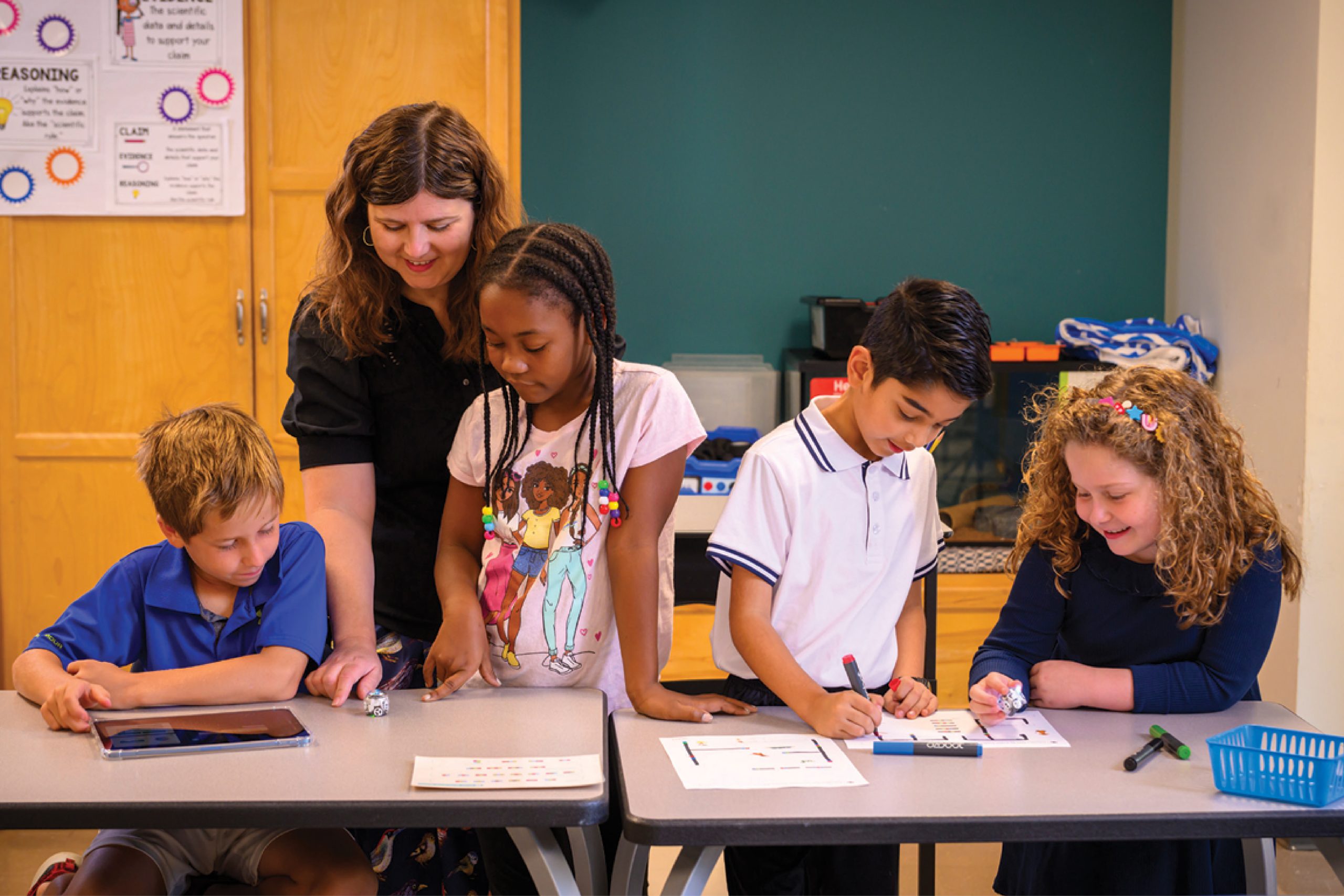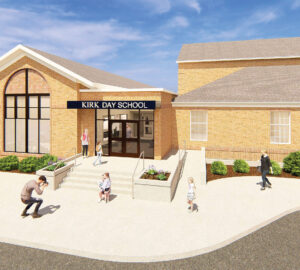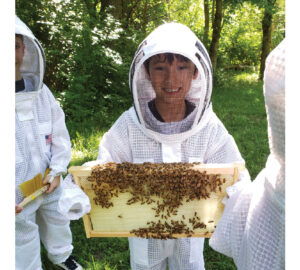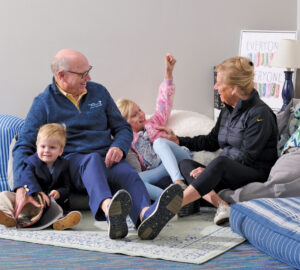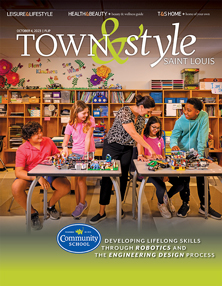 In today’s world, technology touches every part of our lives, and the next generation is expected to not only keep up but also innovate. Understanding STEAM (science, technology, engineering, arts and math) topics plays a vital role in succeeding in school and beyond, and can help students master other important skills like problem solving, collaboration and more. At Community School, students start engaging with science at age 3, and robotics is introduced into the curriculum in kindergarten. It’s all part of the independent elementary school and preschool’s mission to foster the intellectual, emotional and creative growth of students to create the leaders of tomorrow.
In today’s world, technology touches every part of our lives, and the next generation is expected to not only keep up but also innovate. Understanding STEAM (science, technology, engineering, arts and math) topics plays a vital role in succeeding in school and beyond, and can help students master other important skills like problem solving, collaboration and more. At Community School, students start engaging with science at age 3, and robotics is introduced into the curriculum in kindergarten. It’s all part of the independent elementary school and preschool’s mission to foster the intellectual, emotional and creative growth of students to create the leaders of tomorrow.
In kindergarten and first grade, Community School students start by working with simple robots and learn the basics of programming using Scratch Junior. “It’s a drag-and-drop, pictured-based program, but it starts laying the foundation for more complicated Scratch-based programming they will do in the upper grades,” lower division science teacher Trisha Stanley explains. “Not only does early exposure help them build STEAM skills like coding, the focus on sequence and step-by-step programming can help reinforce other concepts, such as storytelling.” In second grade, students start using Blockly-based code to program more in-depth commands using Ozobots.
The foundation developed in the lower grades is then used to program more complex robots to solve more complicated problems. It’s a process that can come with many mishaps and challenges, but upper division science teacher Kathy Lepsky notes that the difficulty is what makes robotics such an important subject. “There are so many things that can go wrong, and students have to learn how to think critically through the process,” she says. “It really is trial and error, so when figuring out what they’re going to do, they have to communicate, collaborate and compromise. It requires perseverance and grit to succeed.”
In sixth grade, students are challenged to create a display of moving art by using LEGO robotics and a variety of sensors. “They choose a theme and use the engineering design process to determine the best way to build things,” Lepsky notes. “For example, we’ve had students create amusement parks. They then must program sensors to make the different elements move. A motion sensor may cause the merry-go-round to start moving and playing music, while a color sensor triggers the Ferris wheel to start spinning. The project challenges them to use more complicated programming skills while also problem solving to ensure each element functions correctly. If something doesn’t work, it’s up to them to determine why and fix it.”
Thanks to Community School’s new Broughton STEAM Center, students now have a dedicated space to work on projects and collaborate across grade levels. The school’s science program is a reflection of its approach to education as a whole, allowing each student to thrive thanks to exciting academic challenges and the support of dedicated teachers. “This hands-on, engaged approach to robotics and engineering is one we take across the curriculum,” head of school Bob Cooke says. “It not only creates future scientists but also encourages students to build important skills that they can use in secondary school and beyond.”
Community School is an independent elementary school and preschool for ages 3 through grade six. It believes in fostering the intellectual, emotional and creative growth of students to encourage their development as leaders of the next generation. Pictured on the cover: Sixth graders design LEGO robotics projects with upper division science teacher Kathy Lepsky. For more information, call 314.991.0005 or visit communityschool.com.
Cover design by Julie Streiler
Cover photo by Colin Miller of Strauss Peyton Photography
Pictured at top: Second graders program Ozobots with lower division science teacher Trisha Stanley.
Photo Colin Miller of Strauss Peyton Photography





